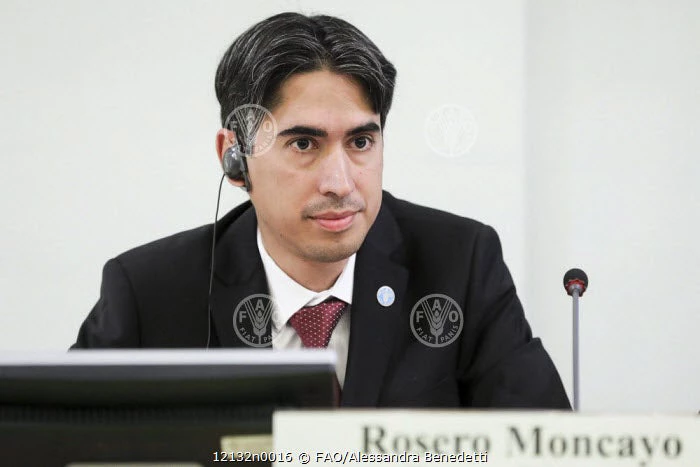
Low-income countries and Sub-Saharan Africa are being left behind in global progress toward affordable healthy diets.
The latest estimates of the Cost and Affordability of a Healthy Diet (CoAHD), published in the 2025 State of Food Security and Nutrition in the World (SOFI) report: Addressing high food price inflation for food security and nutrition, show that while global access to healthy diets is improving, progress remains uneven. In 2024, the global average cost of a healthy diet reached $4.46 per person per day in PPP dollars. Approximately 2.6 billion people could not afford it: a decrease of 48.8 million from the previous year. This improvement reflects modest increases in healthy diet costs globally, offset by recovering incomes in many countries.
However, these global averages mask regional disparities. In Sub-Saharan Africa and low-income countries, conditions have worsened for two consecutive years since 2022, the previous reference point. While most regions saw a notable slowdown in the rise of healthy diet costs in 2023 and 2024 (following sharp increases in 2022), in Sub-Saharan Africa and low-income countries such slowdowns were marginal, keeping costs near record highs. In Sub-Saharan Africa, both the prevalence of unaffordability and total population have continued to grow since 2022, in contrast to most other regions where prevalence is falling. As a result, the number of people unable to afford a healthy diet increased in both 2023 and 2024, pushing these diets further out of reach for millions. In addition, a somewhat worsening trend has also been observed in the Middle East and North Africa, Afghanistan and Pakistan region.
What the indicators measure
The Cost and Affordability of a Healthy Diet (CoAHD) indicators, jointly developed and published by the Food and Agriculture Organization of the United Nations (FAO) and the World Bank, track two key metrics:
- Cost of a healthy diet: An indicator of the national average minimum daily monetary cost needed to sustain consumption of healthy diets, based on the Healthy Diet Basket — a global reference diet derived from countries’ food-based dietary guidelines — based on nationally representative retail prices of locally available food items.
- Affordability of a healthy diet: Measured by an estimate of the share and number of people in each country whose income is too low to afford the diet after accounting for essential non-food needs, based on the World Bank’s international poverty lines.
For global monitoring, all indicators are produced using nationally representative food retail price data from the International Comparison Program (ICP), managed by the World Bank Development Data Group, and income distribution data from the World Bank’s Poverty and Inequality Platform (PIP).
Diverging trends across income groups
Trends in the cost and affordability of a healthy diet reveal persistent and widening disparities across the country’s income groups.
Between 2017 and 2024, low-income countries saw the highest cumulative increase in the cost of a healthy diet — rising by 47.5% compared to the global average of 42.0%. Cost growth in these countries remained elevated in the most recent two years, with increases of 7.6% in 2023 and 7.0% in 2024. These sustained cost pressures have not been matched by income growth.
As a result, the number of people in low-income countries unable to afford a healthy diet has continued to increase, driven by a persistently high prevalence of unaffordability and continued population growth. In 2024, the total reached over 545 million — more than 20% higher than in 2017.
If India is excluded from the lower-middle-income country group, the number of people unable to afford a healthy diet in that group also increased — by 70.3 million people, or 8.8%, compared to 2017.
By contrast, upper-middle- and high-income countries experienced more moderate increases in diet costs and steady improvements in estimated affordability.
These diverging trends highlight a growing structural inequality: while overall affordability is improving globally, the poorest countries are being left further behind. Addressing this gap is critical to achieving universal access to healthy diets.
Faster data, stronger monitoring
A major milestone this year is the shift to T–1 reporting: for the first time, CoAHD estimates are available for the previous calendar year (2024), enabled by enhanced coordination between the World Bank and FAO teams. This update introduces cost indicators also expressed in local currency units, supporting faster and more relevant decision-making at the national level.
The estimates reflect the latest available global data on food prices and income distribution, jointly validated by both institutions. Where data gaps exist, assumptions regarding income and price trends are applied, with increasing reliance on these assumptions required for the most recent estimates. Recognizing this, ongoing efforts aim to improve data recency and granularity to better understand where — and for whom — healthy diets remain unaffordable.
Formalizing the partnership: FAO–World Bank Memorandum of Understanding
To institutionalize their collaboration, the World Bank and FAO signed a Memorandum of Understanding (MoU) in June 2025. The agreement strengthens joint responsibility for producing, refining, and disseminating the CoAHD indicators.
The MoU reflects growing recognition of the CoAHD as a vital global benchmark for food and nutrition security. It also reinforces both institutions’ commitment to methodological advancement and capacity building, helping ensure that monitoring informs country priorities and global policy responses.
Why it matters
The latest data reinforce a growing concern: while global access to healthy diets is improving, it is not reaching the poorest regions and countries. Many parts of the world are gradually restoring affordability, but low-income countries and Sub-Saharan Africa are falling further behind.
Access to a healthy diet is more than just food — it’s about health, opportunity, and dignity. Without targeted investments and smart policies, the affordability gap will continue to undermine progress toward global food and nutrition security. It will also delay the achievement of the Sustainable Development Goals (SDGs), including Zero Hunger (SDG 2), Good Health and Well-being (SDG 3), Poverty Reduction (SDG 1), and Reduced Inequalities (SDG 10).
What can be done?
The data are clear: we need urgent, targeted action to close the affordability gap. This means investing in food systems, supporting vulnerable families, and ensuring that economic growth translates into real improvements in people’s lives.
Explore the data
The latest CoAHD data update is now available across multiple high-impact global platforms. Explore selected resources below to access data, methods, and insights on the cost and affordability of healthy diets.
The authors gratefully acknowledge Inyoung Song for her contributions to the blog’s visualizations, and Mizuki Yamanaka for preparing the PPP data used in the CoAHD indicator estimates. Special thanks go to Christoph Lakner and Samuel Kofi Tetteh-Baah for their work on income data from the World Bank’s PIP platform. We also extend our appreciation to colleagues across the World Bank and FAO teams for their collective support in the timely production and dissemination of the CoAHD data.







Join the Conversation